When it comes to rimfire chores, is .22 Mag overrated? Or does its extra punch make it more versatile than old reliable .22 LR?
In each annual edition of this Gun Digest, you are regaled by tales of exotic places full of stories about trophy bull elk or dangerous African game. You read about rifles that, if they’re not modern and sexy, are at least classic and classy. And then there are my assignments, which are here to keep you grounded.
With that in mind, let me tell you about a skunk I killed the other day on a muddy trail in Kentucky with a .22 Magnum. It wasn’t the first skunk I’ve taken with the legendary rimfire cartridge. In fact, I killed a different skunk only the day before. And if history is any indicator, I’ll shoot another one or two before the year is out—and I’ll use the heralded .22 Magnum to handle all the heavy lifting.
This skunk was dispatched from 120 yards—guessed but not confirmed with a rangefinder—with the rifle rested across the handlebars of a Honda four-wheeler. Only a single bullet was required, and the results were swift and, as skunk killings go, mostly odor-free.
What brought me into the situation was that from late December through February each year, I run a line of about two dozen predator traps. My primary targets are coyotes, bobcats, raccoons, and foxes. To dispatch them in a trap and preserve their furs, I mostly use a .22 Long Rifle handgun loaded with standard-velocity 40-grain bullets.
But now and then, a striped polecat (that’s Southern for skunk; I realize true polecats are living elsewhere) finds its way into one of my Bridger footholds. I trap partly for the fun of it but primarily for predator control. I’ve learned that removing some predators in the late winter equates to more turkey poults and deer fawns in the spring and summer. As skunks are documented nest predators, they get no quarter from me on the trapline.
Not that I’d be brave enough to approach and release one. Being caught in a foothold trap seems to activate a hair trigger for the skunk’s primary defense, which is quite noxious and something you’ll learn all about if you get too close. That is one reason why, in addition to my .22 LR handgun, I never check a trapline without a scoped and highly accurate .22 WMR rifle close by with which I can kill skunks instantly and from well out of reach of their spray.
Another reason for the rifle? Not every shot you get at a predator while running a trapline happens because you’ve caught one. Every season, I get chance opportunities at critters, from coyotes and bobcats to armadillos. The .22 WMR is the perfect cartridge for incidental varmint work because it offers more effective range and power than the .22 LR without the ear-ringing report and fur-wrecking properties of a .22 centerfire.
My go-to rifle on the line is a Bergara Micro Rimfire Carbon with a threaded, 20-inch carbon-fiber barrel and match-grade chamber. Mine’s fitted with a SilencerCo Sparrow suppressor, and I have it topped with a 30mm Hawke Vantage 3-9×42 IR scope. The illuminated reticle really shines, pun intended, for low-light shooting at slinky predators. The rifle weighs just 5 pounds, and with the scope and suppressor added, the finished weight can’t be much more than 7 pounds. It’s impervious to the weather and grime that guns are exposed to on a trapline, and it shoots lights out.
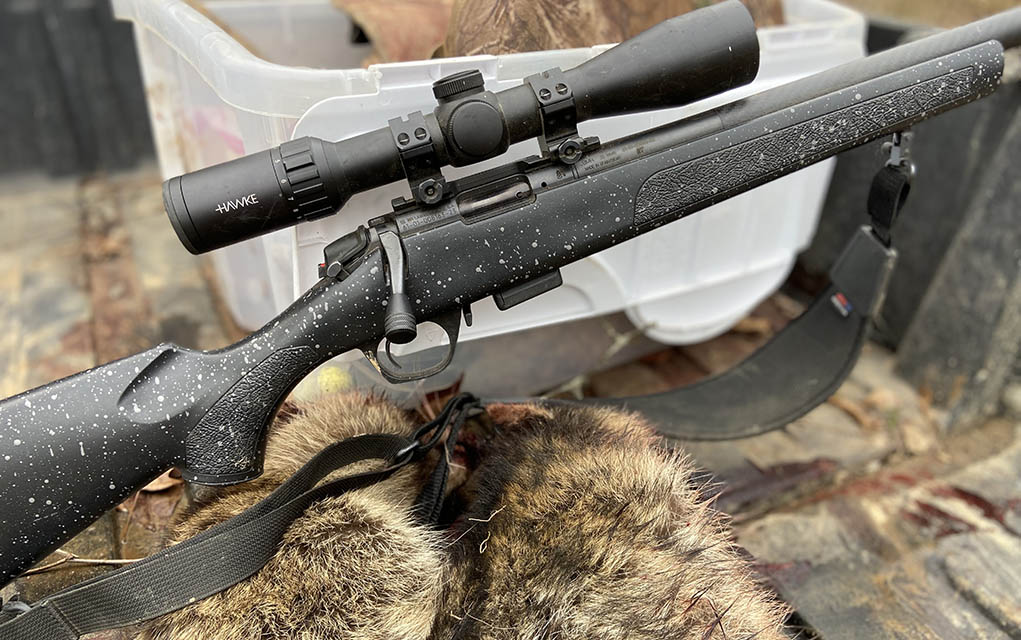

Yet, that rifle is far from the only .22 Magnum I own and shoot regularly. There’s the worn Marlin bolt gun I still use for killing groundhogs at my folks’ cabin, the new Ruger Precision Rimfire that has become a go-to squirrel sniper, and the scratched-and-battered Ruger Single Six revolver that’s my companion for summer frog hunting.
Since my teenage years, the .22 WMR has been a favorite cartridge for hunting and varmint shooting. Given its utility in rifles and handguns, I think it’s one of the best cartridges a serious outdoorsperson can own. Better factory ammunition, premium bullets, and outstanding new rifles and handguns have also given the .22 WMR a resurgence in popularity.
Origins and Reputation
The .22 Winchester Magnum Rimfire—.22 WMR or .22 Magnum for short—was introduced in 1959. It is an elongated version of the .22 Winchester Rimfire (WRF), introduced in 1890 and still factory-loaded by Winchester and CCI today. Though the .22 WRF offered ballistic advantages over the .22 LR loads of the day, it had little advantage over today’s high-velocity Long Rifle ammunition and is basically obscure.
But the .22 Magnum is another matter. Though it uses bullets of the same diameter, WMR cases are longer in length and larger in diameter than .22 LR. From a rifle barrel, published ballistics show a 40-grain CCI Gamepoint .22 WMR leaves the muzzle at 1,875 feet per second, 615 fps faster than a 36-grain CCI Mini-Mag .22 LR. The magnum rimfire also carries almost twice the muzzle energy at 312 foot-pounds. For perspective, that’s more energy than a 130-grain .38 Special +P fired from a handgun.
Though public opinion seems more favorable now, the .22 Magnum suffered a mixed reputation for decades, particularly among some gun writers. Field & Stream Rifles Editor David Petzal included it in his 10 Most Overrated Cartridges Ever Made roundup. He summarized the .22 WMR by saying:
“It’s been around since 1959, and is by any account a commercially successful cartridge, but I’m damned if I can see why. On the one hand, it’s more powerful than the .22 LR, but on the other, it gives you only 25 yards (or so) more effective range. It has neither the low cost of the .22 LR or its accuracy.”
Now, to give credit where due, Petzal is one of history’s great gun writers who knows more about rifles than I do. As a hunting editor of Field & Stream myself, I know him personally. He’s a nice guy (despite the gruff persona) who happens to be wrong about the .22 Magnum.
Of course, if you compare the merits of the .22 WMR to the .22 LR, the cost is a natural consideration, and the magnum cartridge is indeed more expensive. CCI Maxi-Mags are about 25 cents per shot in 2024, compared to 8 cents for Mini-Mag .22 LR. Yet, compared to cheap centerfire rifle ammunition, the .22 WMR remains economical to shoot. For perspective, .223 Remington American Eagle 55-grain FMJ is about 62 cents per round.
If your idea of a rimfire’s role is primarily burning up ammunition by the brick at targets and maybe shooting a squirrel on occasion, then sure, the cost savings of the .22 LR is a big consideration. But the .22 Magnum is not a plinking or training round; it’s a hunting cartridge.
The flatter trajectory from the added velocity is a decisive advantage. Sighted in at 50 yards, the .22 WMR hits a half-inch low at 75 yards and 8 inches low at 150 yards. The .22 LR, sighted in at the same distance, drops 1.8 inches at 75 yards and 20 inches at 150. For perspective, a squirrel’s head is about 2 inches in diameter, and a coyote’s vitals are about 6 inches in diameter. So, with the .22 WMR, you can hold dead-on and clip a squirrel’s noggin out to 75+ yards or dump a coyote at 150 yards without holding off fur. You simply cannot do the same with a .22 LR.
Besides that, the .22 WMR carries more energy at 100 yards than the .22 LR does at the muzzle—and that creates a dramatic difference in the terminal effect on critters and is the primary reason behind the .22 WMR’s fanbase. Those who regularly use this cartridge know it punches above its fighting weight.
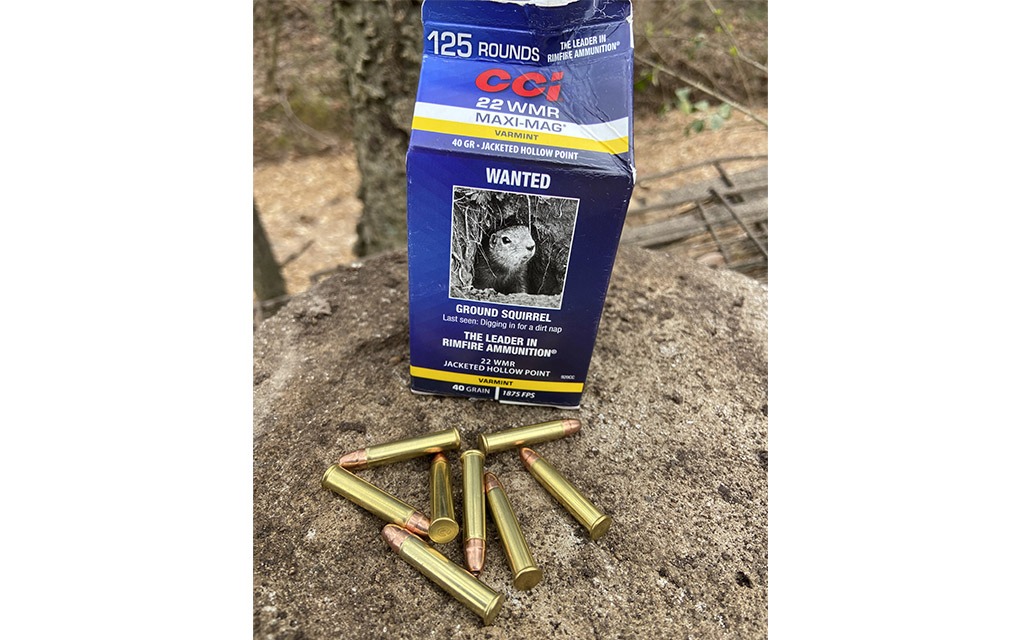

My buddy Ryan usually keeps a Ruger American Rimfire in .22 WMR in his truck. It’s not only his go-to squirrel gun but also his pick for coyotes, opossums, and any other critters he comes upon in a day of countryside turd-kicking. Ryan’s also a part-time cattle farmer, which isn’t always a pleasant business. Sick and injured cattle frequently have to be put down, and he makes no bones about what works best to do the job humanely. “I’ve tried to put cows down with pistols, like 9mms and .380s, and it’s not good,” he says. “Those pistol bullets will not always penetrate a cow’s skull. But the .22 Magnum between the eyes is a different story. It’s one and done about every time.”
I’ve shot hundreds of predators, both called and trapped, with the .22 LR, .17 HMR and .22 WMR. I’ve also hunted squirrels extensively with each of the cartridges. There is no question in my mind that the .22 Mag is the most decisive killer of the bunch. The .17 has the edge in velocity, but the .22 Mag’s bullets weigh about twice as much. They penetrate deeper and do a better job of anchoring tough coyotes quickly—though they’re not always as friendly on fur. I like the .17 HMR slightly better for squirrel hunting because, with the right bullet, it’s less destructive on meat. But the .22 WMR works excellently if you take headshots.
If I had to choose just one all-purpose rimfire rifle for everything from small game hunting to 100-yard coyote calling, it would unquestionably be a .22 Magnum. Fortunately, I’m not in such dire straits, and I have great rifles chambered for all three cartridges.
Accuracy
All that power is great, but it doesn’t do a squirrel hunter any good if the guns don’t shoot. For a time, the .22 WMR’s reputation for inaccuracy may have been warranted. My dad has an old bolt-action Marlin with a tubular magazine, perhaps a 783, that I used when I was a kid for shooting groundhogs in the neighbor’s pasture. It worked well enough, but good 50-yard groups for that gun were around an inch. I need a squirrel rifle to shoot better. (To be fair to the old Marlin, it wore a cheap 4x scope, and the bolt handle had been broken off and welded back on.)
I’ve shot several new .22 Mags from various manufacturers over the past decade, and I rarely find one now that doesn’t shoot very well. Take my Ruger Precision Rimfire, for example. Topped with a Leupold VX Freedom 4-12×40, it will put five CCI Gamepoints into a tiny, ragged hole at 50 yards. That’s not just headshooting accuracy for squirrel hunting; it’s eyeball accuracy. My “skunk rifle,” the Bergara BMR, doesn’t shoot quite that well, but it nonetheless groups well under an inch at 50 yards with CCI Maxi-Mag hollowpoints.


Rifle manufacturing processes have improved (not just for rimfires but also for rifles). Factory triggers are much improved and often adjustable. As I understand from folks in the know, chamber tolerances have improved for the .22 WMR. That .22 Mag rifles aren’t capable of outstanding accuracy is not true anymore. Many of them will shoot just as well as .22 LR guns.
Besides that, factory ammunition is far better. I was limited to a few 40-grain jacketed hollowpoint options when I was a teenager, hunting groundhogs. Today, manufacturers are loading .22 WMR with a variety of premium bullets. CCI offers the polymer-tipped 30-grain V-Max and VNT, the 40-grain Maxi-Mag Jacketed Hollowpoint, the 40-grain Gamepoint Jacketed Soft Point (my personal favorite), and the 46-grain Polymer-Coated Segmented Hollowpoint. Winchester has 10 .22 WMR options, including a 30-grain Varmint High-Velocity JHP, a 30-grain V-Max, and a pair of defensive offerings, including a 40-grain Silvertip and 40-grain Defender JHP. Hornady has a load with its signature 30-grain V-Max and a defensive option with the 45-grain FTX (Flex Tip).
The lighter-weight bullets tend to bump velocities up by 200 fps and provide a more explosive effect on smaller critters. For my use, I usually lean toward 40-grain bullets with more controlled expansion. They don’t always “blow up” when they contact a squirrel, meaning better weight retention and deeper penetration on predators. They exit coyotes more often than not.
A Few Favorite .22 Mag Rifles
Plenty of excellent .22 Magnum rifles are on the market now, but I have firsthand experience with all these or guns very close to them. None are cheap, but they won’t break your budget.
Ruger Precision Rimfire
I was skeptical of this “chassis rifle” when I first carried it into the squirrel woods, but I quickly came around. With a Quick-Fit precision adjustable stock, free-floating handguard, threaded target barrel and adjustable trigger, it’s built for competitive shooters. Still, it is also right at home in the oaks and hickories. The rifle uses Ruger’s dead-nuts-reliable rotary mag (like the 10/22), which is the best rimfire rifle magazine made if you ask me. Mine is the most accurate .22 WMR I’ve ever shot, too.
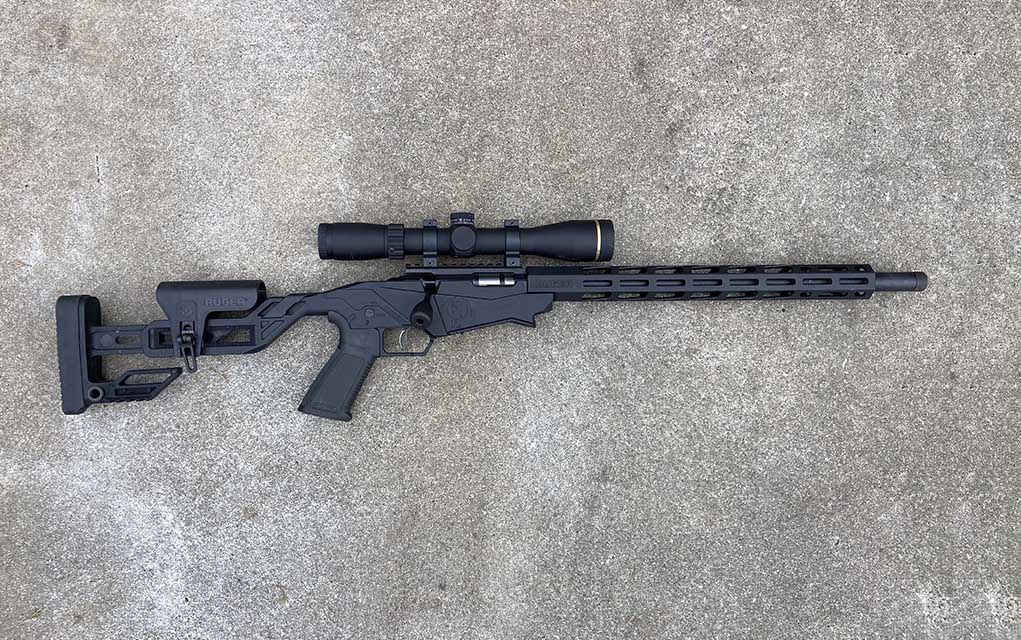

Bergara BMR
The Bergara is the .22 Mag I reach for, if not daily, at least weekly during the fall and winter. It’s my truck gun, ATV gun, and out-the-back-window-of-the-house gun. As mentioned, it won’t quite shoot with my Ruger Precision, but it is still more than capable of headshooting accuracy in the squirrel woods. With a traditionally styled stock and No. 6 carbon-fiber barrel, it’s also ultra-lightweight and impervious to the weather.
My only critique of it is the magazine system. It feeds well enough, but the mag release lever is large and obnoxious, and the mags (both five- and 10-rounders are supplied) require some finagling to seat properly into the rifle.
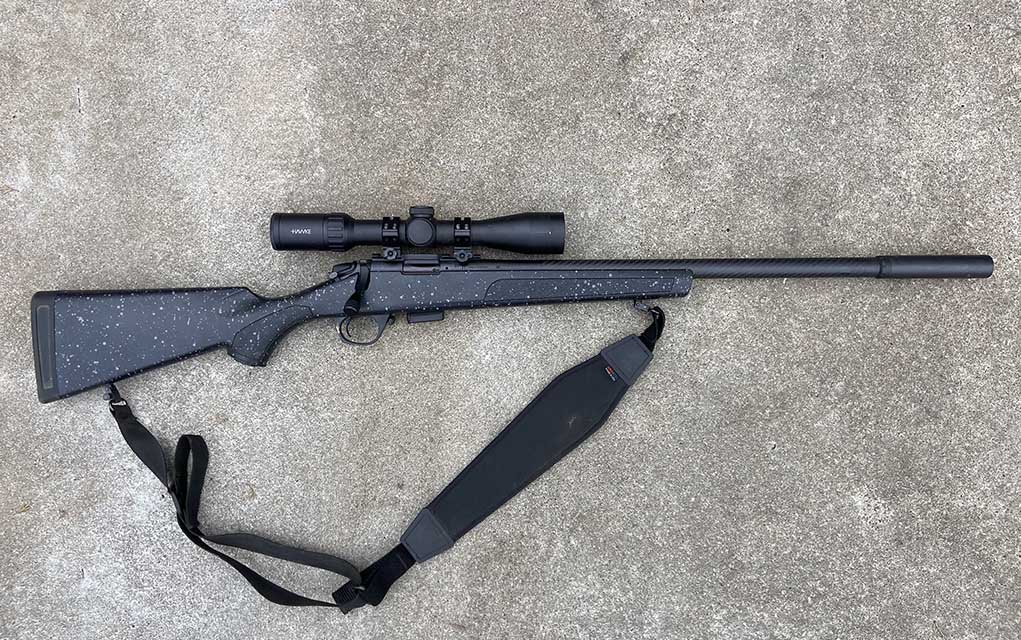

Savage A22 Magnum
Over the years, semi-automatic .22 Magnums have come and gone, but few of them have worked reliably. Savage figured it out with the A22 Magnum, which uses a delayed-blowback action to cycle the magnum cartridges reliably without splitting cases. The rifle works exceptionally well with CCI’s complementary A22 Magnum ammunition, which uses a 35-grain version of my favorite Gamepoint bullet.
The A22 Magnums I’ve shot, and there have been several, wouldn’t quite group with the Ruger or Bergara listed above, but they were ahead of my dad’s old Marlin, and reliability was excellent. If I were looking for a dedicated predator hunting rifle where report and over-penetration were concerns, this would be tops.
Henry Lever-Action .22 Magnum Express
Once upon a time, Winchester and Marlin ruled the lever-gun roost, but not anymore. Henry Repeating Arms has more top-shelf lever guns in its lineup than anyone else. The rifles are made in America with classic bluing and walnut furniture, and I’ve yet to shoot one that I didn’t want to keep and hand down to my son one day.
I have two Henry Single-Shots and a Big Boy in my centerfire collection, but the Lever-Action .22 Magnum Express would be next on my wishlist. It has the lines of a classic lever gun with an 11-round tubular magazine but with a Picatinny optics rail pre-installed and a Monte Carlo buttstock with a raised comb. There’s no sense in having a quality .22 Magnum rifle without a solid scope on top.
.22 Mag Handguns
The .22 Magnum is a rifle cartridge that shines in handguns, too. It’s outstanding for the trail and campsite. It also offers potential for defensive use, particularly with new ammunition like Speer Gold Dot, optimized for performance in shorter handgun barrels. Expect a louder report than a .22 LR handgun but identical recoil (none) and far better terminal performance.
Ruger New Model Single Six
The Ruger New Model Single Six single-action revolver was originally meant to capitalize on the popularity of the Colt Single Action Army. Still, it’s become a classic in its own right. It has interchangeable cylinders, one for shooting .22 Long Rifle (or .22 Shorts or Longs), and the other for .22 Magnum. My first handgun was a Single Six with a 5.5-inch barrel that my dad bought used, and it only came with the magnum cylinder. That’s all I’ve ever needed. There’s no telling how many critters have been befallen by that gun, and it still rides on my hip on many an excursion to this day.
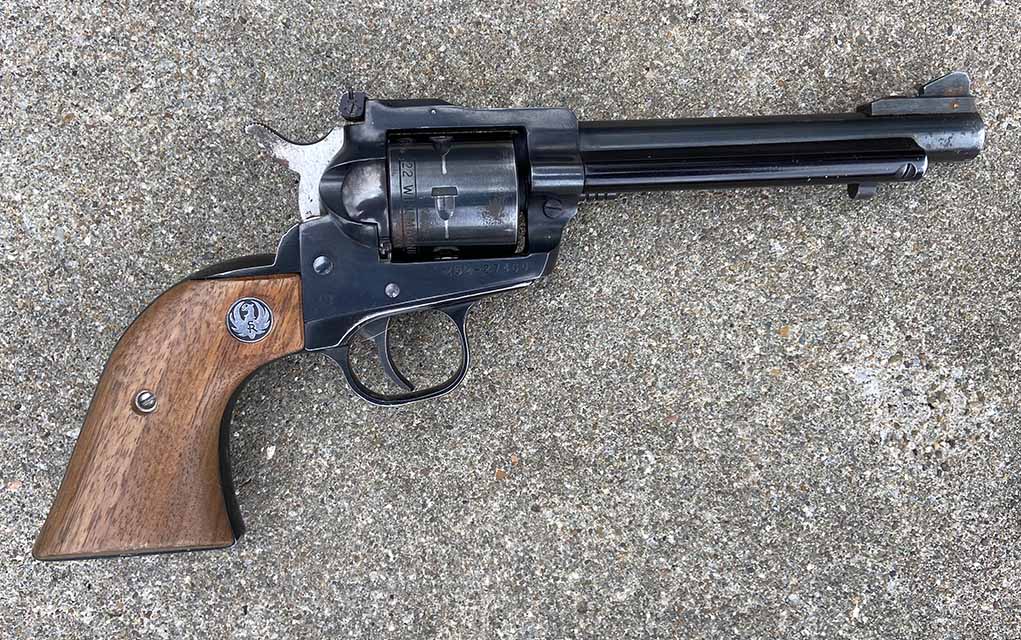

Smith & Wesson Model 48
I like single-action revolvers, but I love a classic double-action, and Smith & Wesson in particular. The K-frame Model 48 is available in S&W’s Classic series. It’s a steel beauty with wood grips and Patridge sights but with modern enhancements like a transfer bar safety. If I wanted a top-of-the-line .22 Magnum double-action as an all-purpose handgun for hunting, target shooting, and defense in a pinch, this would be it.
Kel-Tec PMR 30
I love revolvers but won’t go full Fudd on you in the handgun section. A few other companies now offer high-capacity .22 WMR semi-autos, but the Kel-Tec PMR 30 was among the first that worked. My buddy Ryan (mentioned earlier) has one, and he says that any problem that can’t be solved with 30 rounds of .22 Magnum is a real problem indeed. The gun is a bit finicky if magazines are not loaded correctly, but when they are, it’s a reliable little blaster that’s easy to hit with, a ball to shoot, and not terribly expensive.
Conclusion
The .22 WMR is many things, but overrated ain’t one of them. That it is capable of pinpoint accuracy worthy of precision small game hunting, has the punch to anchor coyotes, and works nearly as well in revolvers as it does in rifles makes it a cartridge worth keeping around, perhaps in a few different guns.
There’s maybe no finer round for dispatching those striped polecats, either.
Editor’s Note: This article is an excerpt of Gun Digest 2025, 79th edition.
More On Rimfires:


Next Step: Get your FREE Printable Target Pack
Enhance your shooting precision with our 62 MOA Targets, perfect for rifles and handguns. Crafted in collaboration with Storm Tactical for accuracy and versatility.
Subscribe to the Gun Digest email newsletter and get your downloadable target pack sent straight to your inbox. Stay updated with the latest firearms info in the industry.
Read the full article here





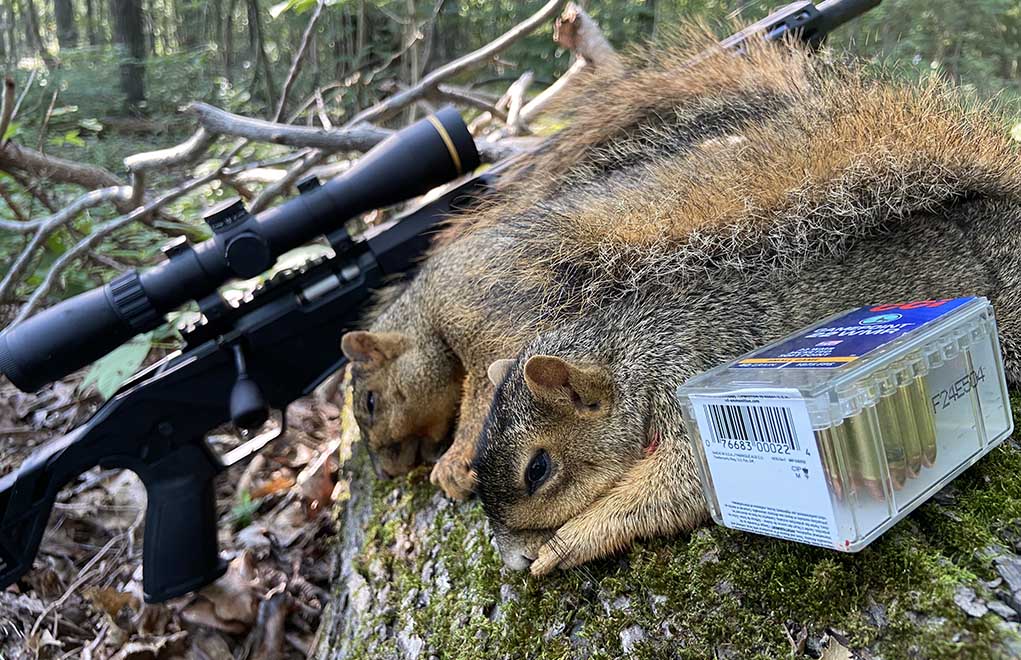




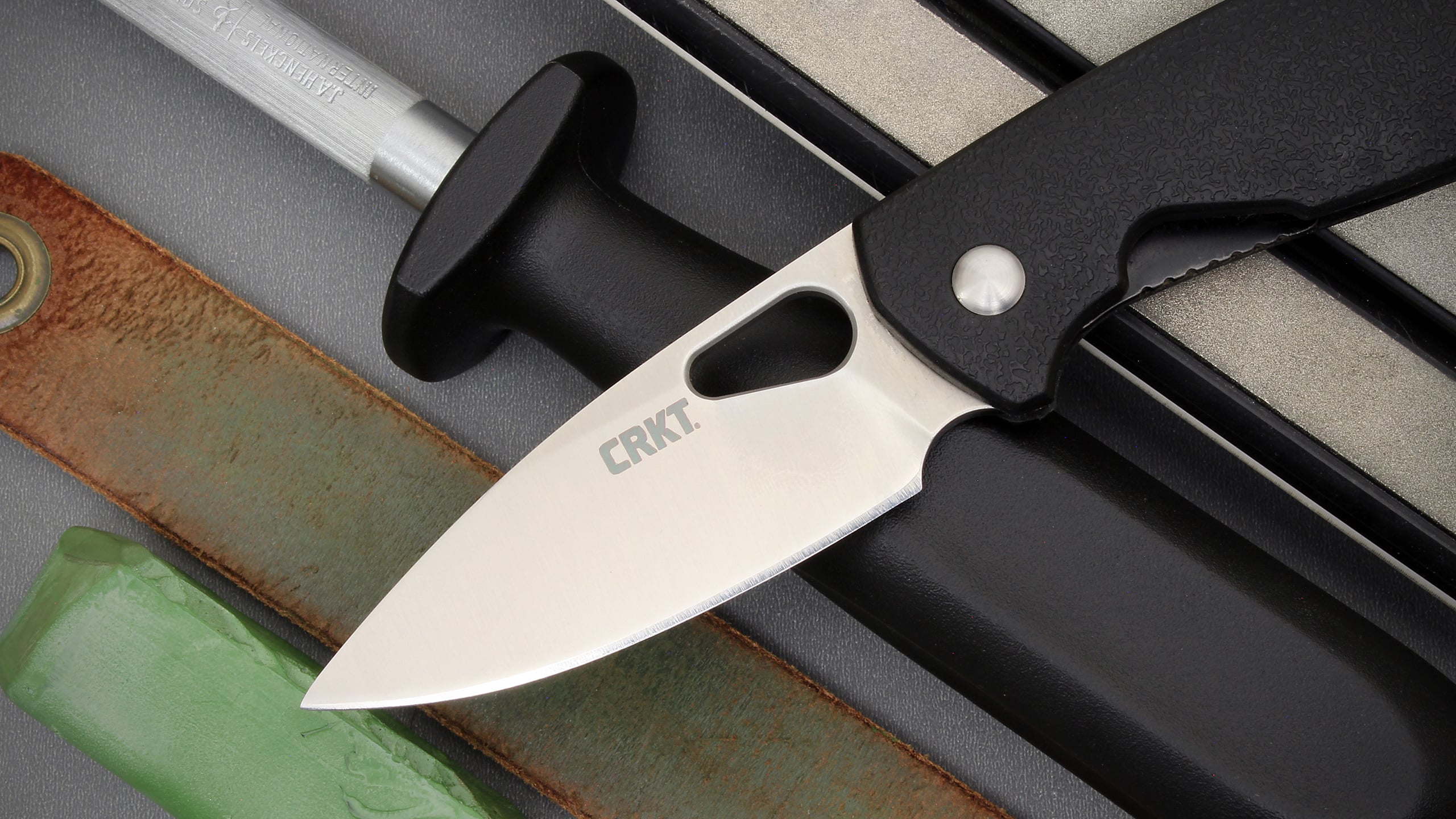



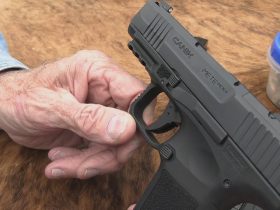



Leave a Reply